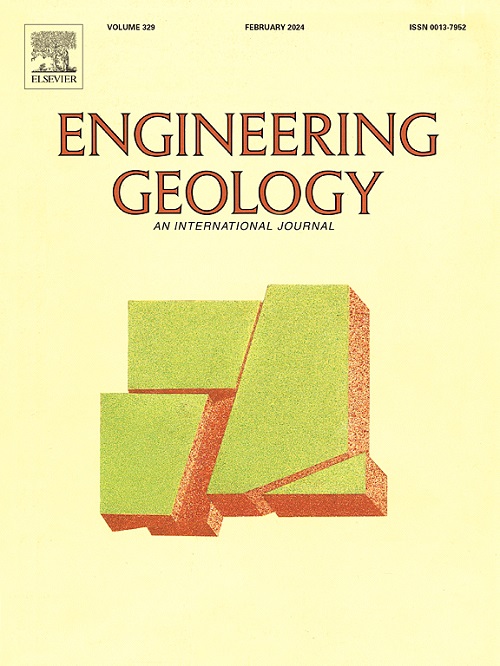Formation mechanism of metastable internal support microstructure in Malan Loess and its implications for collapsibility
IF 6.9
1区 工程技术
Q1 ENGINEERING, GEOLOGICAL
引用次数: 0
Abstract
Loess is formed from dust through wind transportation, sedimentation, and pedogenesis. Studying its initial sedimentary structure can elucidate the origin of loess microstructures and various engineering geological properties closely related to them. This study conducted wind tunnel experiments, scanning electron microscopy (SEM), and numerical simulations to analyze the microstructures of deposited dust and intact loess. The results revealed the following: (1) A novel internal support structure was widely observed in both deposited dust and intact loess, characterized by coarse silt particles as the skeleton and fine silt and adhesive components as the supporting elements. The former exhibited minimal adhesive components and was classified as “unstable,” whereas the latter possessed some adhesive components and was classified as “metastable.” (2) During pedogenesis, adhesive particles form bonding components under the influence of water, causing deposited dust to gradually evolve into intact loess without significant disturbance to the internal support structure. (3) The collapsibility of loess was primarily due to the breakdown of the bonding components in the metastable internal support structure of intact loess upon exposure to water. The metastable internal support structure identified in this study can be used to describe the collapse of loess from both macro- and micro-perspectives, providing new insights into the loess microstructure and the relationship between loess structure and engineering geological properties.

马兰黄土亚稳内支架微观结构形成机理及其湿陷性意义
黄土是由沙尘经风运、沉积和成土作用而形成的。研究其初始沉积构造,可以阐明黄土微结构的成因及与之密切相关的各种工程地质性质。通过风洞实验、扫描电子显微镜(SEM)和数值模拟等方法分析了沉积尘埃和原状黄土的微观结构。结果表明:(1)在沉积尘埃和原状黄土中均存在一种以粗粉土颗粒为骨架,细粉土和黏着物为支撑元素的新型内部支撑结构。前者表现出最小的粘附成分,被归类为“不稳定”,而后者具有一些粘附成分,被归类为“亚稳态”。(2)成土过程中,黏附颗粒在水分的作用下形成粘结组分,使沉积的粉尘逐渐演化成完整的黄土,而内部支撑结构没有受到明显的扰动。(3)黄土的湿陷性主要是由于原状黄土的亚稳内部支撑结构中的粘结组分在受水作用下被破坏所致。本研究确定的亚稳态内支撑结构可以从宏观和微观两个角度描述黄土的坍塌,为黄土微观结构以及黄土结构与工程地质性质的关系提供了新的认识。
本文章由计算机程序翻译,如有差异,请以英文原文为准。
求助全文
约1分钟内获得全文
求助全文
来源期刊

Engineering Geology
地学-地球科学综合
CiteScore
13.70
自引率
12.20%
发文量
327
审稿时长
5.6 months
期刊介绍:
Engineering Geology, an international interdisciplinary journal, serves as a bridge between earth sciences and engineering, focusing on geological and geotechnical engineering. It welcomes studies with relevance to engineering, environmental concerns, and safety, catering to engineering geologists with backgrounds in geology or civil/mining engineering. Topics include applied geomorphology, structural geology, geophysics, geochemistry, environmental geology, hydrogeology, land use planning, natural hazards, remote sensing, soil and rock mechanics, and applied geotechnical engineering. The journal provides a platform for research at the intersection of geology and engineering disciplines.
 求助内容:
求助内容: 应助结果提醒方式:
应助结果提醒方式:


